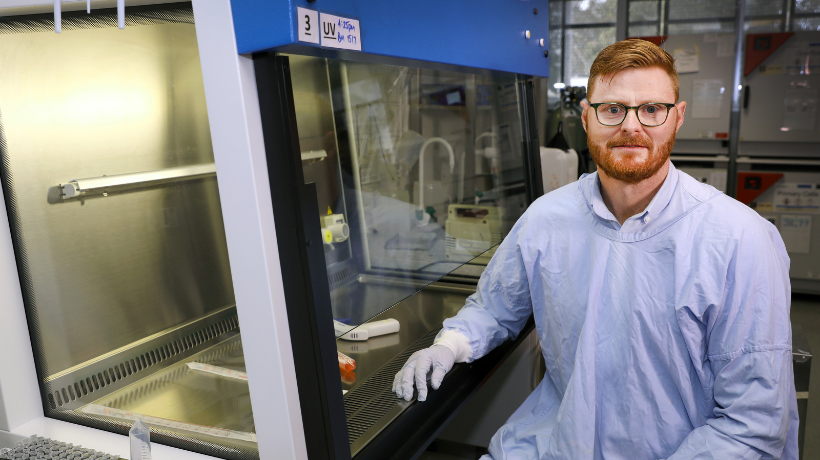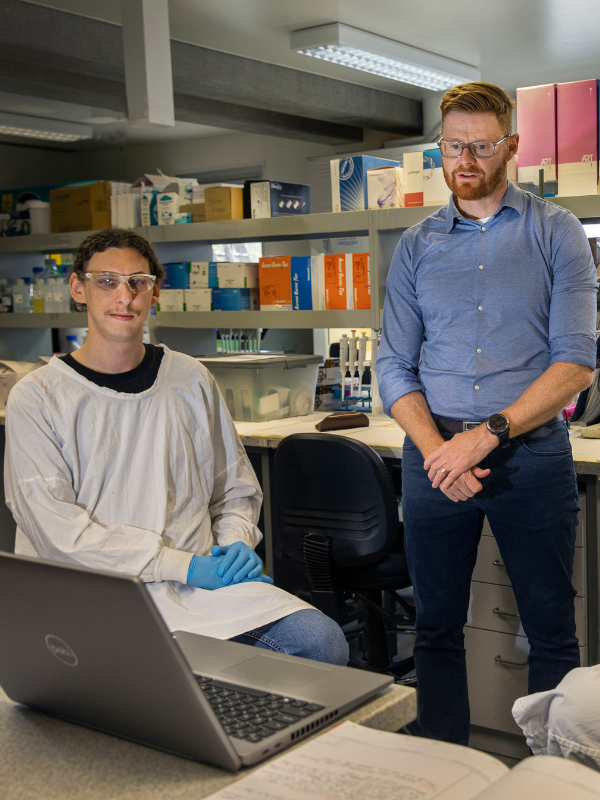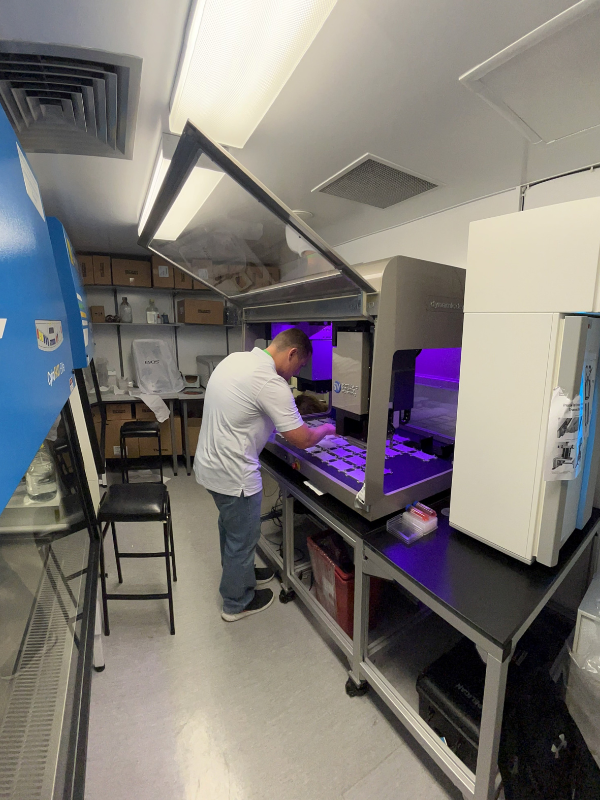
For Professor Matt Dun, his research into DIPG is more than just professional. In 2019, his daughter, Josie, sadly passed away from the aggressive form of childhood brain cancer, leading him to dedicate his career solely to developing treatments for the currently incurable disease. Today, with the help of your generous gifts, Prof. Dun and his team are making promising strides towards the first effective treatments for this devastating disease.
DIPG (diffuse intrinsic pontine glioma) is a cancer that many people haven’t heard of. Yet, it shockingly accounts for nearly a quarter of all childhood and young adolescent cancer deaths and currently has no effective or specific treatments. Heartbreakingly, that means that the average survival after diagnosis for children with DIPG is just 11 months.
 After Professor Dun’s daughter, Josie, was tragically diagnosed with DIPG he knew he had to switch his research focus. He says:
After Professor Dun’s daughter, Josie, was tragically diagnosed with DIPG he knew he had to switch his research focus. He says:
“I’ve been solely focused on DIPG research for over five years. I knew I had to take on this particular cancer after my own daughter, Josie, was sadly diagnosed in February 2018, passing away from it in December 2019.
“Even as a cancer researcher myself, it (DIPG) wasn’t really on my radar until Josie was diagnosed. At the time, the only treatment was radiotherapy, something that’s not even remotely specific at tackling such an aggressive cancer.
I knew I had to get to work. Digging into as much scientific literature as I could, I found the gaps that were missing and wholly committed myself to filling in that area of knowledge, to help prevent or to help other families from going through what mine did.
“During Josie’s cancer journey, I managed to discover a new combination of therapies, and she was the first patient worldwide to get them. It meant that she lived for nearly two years on those drugs.”
The drugs that Prof. Dun discovered during Josie’s treatment showed such significant promise that he and his team have continued their research into their potential. Thanks to the generous gifts of people like you helping to fund their vital work, their ongoing work is yielding huge breakthroughs.
At their research base at the University of Newcastle, the team have early results from their lab models that show the treatment combination could increase survival rate by an incredible 96.6% compared to the old treatment of radiotherapy alone. That means that, in theory, the treatments could double the length of time kids with DIPG can survive after diagnosis. Prof Dun continues:
For a disease that currently has no recognised treatment, that’s a line in the sand that says we can do this − we can give kids with DIPG hope of survival.
“Of course, the ultimate goal is that one day, kids survive this horrible disease, not just live for a year longer. But research takes time and the next realistic goal we’re aiming for is to give kids more precious time with their families, rather than be robbed of their lives in under a year by DIPG.
“Like all research, we have to start somewhere. It’s inspiring to look at the progress that has been made for other diseases thanks to focused research and the committed support of people like you. In 1950, living memory for some people, leukaemia was fatal for every single child who got it. Today, it’s one of the most treatable childhood cancers with one of the highest survival rates.”
Prof. Dun and his team have identified their next steps to take their most recent findings out of the lab and give real kids with DIPG access to their pioneering treatment; a collaborative clinical trial with other researchers also tackling DIPG.
The trial would give kids with DIPG the new treatment combination, then after a period of time, test their tumour to measure the amount of drugs present. This means that Matt and his team can identify the children who will potentially respond to treatment and those who won’t. For those who do respond to it, their treatment can be monitored and potentially their dosages can be increased.

If the team decide the drug combination isn’t effective for a certain child, they can stop the unnecessary treatment and the child can enrol on another trial and receive different drugs that might be more effective. For Prof. Dun, it’s only a matter of time until we can say that DIPG can be treated:
“We’ve got a huge way to go, but if I didn’t think there was an endgame, I wouldn’t be doing this. Once we start to move the needle, other fantastic researchers will pick up our findings and run with them too.
I think we’re on the precipice of some great changes in DIPG treatment and I sincerely believe that.
Professor Dun’s groundbreaking research stands to give the very first hope of effective treatment to kids with DIPG and their families – that’s only possible thanks to the ongoing and very generous support of people like you. You’re directly helping researchers like Prof. Dun tackle some of the deadliest forms of childhood cancer and allowing them to make incredible progress. Thank you.
